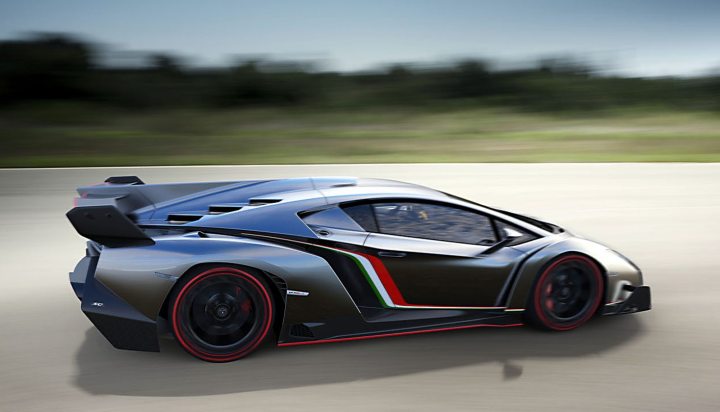Maverick Life
83rd International Motor Show, Geneva: The birth of the hypercar

If motor shows are the barometers of the industry’s wellbeing, then the Geneva Motor Show was either playing a cruel game of masquerades, or all that gloomy talk of plummeting car sales and an industry in trouble is vastly exaggerated. But then, glamour-struck Geneva may not be the most accurate measure of the true state of the global motor industry’s affairs. By DEON SCHOEMAN.
Geneva’s Salon International de l’Auto is the darling of the global motor show circuit. Hosted by one of the most expensive cities in the world, the expo is conveniently situated directly next to the local airport. Even better, it’s intimate and media-friendly in comparison to the gargantuan sprawl of car-filled halls in Paris or Frankfurt.
But don’t be fooled by the relatively compact format: Geneva attracts the crème de la crème of the motoring world, and usually hosts an extended list of world debuts that easily eclipses any of its motor show rivals. For 2013, that tally exceeded the 130 mark.
No wonder, then, that some 10,000 accredited media flock to Geneva for the two press preview days, before the big glass doors open to the public. And once that happens, more than 700,000 fans will fight and jostle their way through the throngs for close-up-and-personal views of their favourite cars – or their fantasy models.
And what was on display as this year’s Geneva expo was sheer fantasy for most of us lesser mortals: cars so fast, so advanced, so exclusive (and so expensive) that even the ‘supercar’ moniker no longer suffices. So, Geneva 2013 may well be remembered as the show that spawned the hypercar.
Even if you discount the Bugatti Veyron (now a motor show veteran, but still arguably the world’s fastest production car), and a number of hand-built, one-off concepts, there were still four of these hypercars for petrolheads to feast their eyes on.
FERRARI LAFERRARI

Of that quartet, the Ferrari LaFerrari was easily the star of the show – and despite a name that is just too silly for what is the Italian marque’s most daring, and most advanced, production model ever.
The LaFerrari is the ultimate fusion of sports car and Formula 1 technology. As Maranello’s statement car, it replaces the seminal Enzo with a combination of fierce styling and raw power, delivered by an advanced drivetrain linking petrol and electric power.
The normally aspirated V12 engine is good for 588 kW, which would be sufficient for most supercars. But here, it is ably assisted by a F1-style KERS system that harvests energy from braking and trailing-throttle driving, then uses that energy to drive a 120 kW electric motor, for a combined output of 708 kW.
The LaFerrari gets to 100 km/h from rest in under 3 seconds, and reaches a top speed well in excess of 350 km/h. It’s Ferrari’s fastest road car ever.
The shape is pure hypercar: driven by function rather than aesthetic form, it looks sharp and darty and purposeful, but hardly pretty in the enduring way expressed by classics such as the 246 Dino, or even the new-generation 458 Italia. But it’s certainly purposeful and pugilistic: see one of these in your rear-view mirror, and you’ll feel compelled to move over.
Only 499 LaFerraris are scheduled for production, at a price on the wrong side of R10 million.
KOENIGSEGG AGERA S HUNDRA

If a production tally of just 499 cars sounds exclusive, consider the latest hypercar from Swedish sports car maker Koenigsegg. The Agera S Hundra is a once-off special, built specifically for a Hong Kong client with a taste for speed and exclusivity, and celebrating the marque’s 100th car.
Admittedly, the Hundra is based on the Agera R, of which Koenigsegg builds 20 or so every year, spending around 3,000 man hours painstakingly assembling each car. The Hundra, however, pushes up that number to beyond the 4,000 hour mark.
It’s hardly a thing of beauty in the conventional sense, but then, Koenigsegg’s designs are driven purely by the need for undiluted, balls-to-the-wall, face-flattening performance. The Hundra’s carbon fibre body has been left unpainted, while the chassis is a pure carbon fibre tub (yet another reference to F1 tech).
But here’s the truly exclusive part: the swirled finishes on the carbon fibre bodywork are executed in 24-carat gold leaf.
The underpinnings link a bespoke, 750 kW supercharged V8 to a 1,400 kg body, allowing a zero to 100 km/h sprint time of 2.8 seconds, while the car will dash from zero to 300 km/h, and then brake to a standstill, in just 22,5 seconds. Its Hong Kong owner paid US$1,6 million (that’s about R15 million) for the privilege.
LAMBORGHINI VENENO

What would a hypercar shootout be without the presence of Lamborghini? The Sant’Agata sports car maker, these days building finer machines than ever under the watchful (and quality-driven) eye of Audi, used its half-century birthday celebrations as the raison d’etre for creating its hypercar – and producing only three examples.
Almost predictably, the Veneno employs carbon firbre-reinforced polymer for its body panels, fused to a carbon fibre tub. And while it is broadly based on the mainstream Aventador production car, the Veneno is more street legal race car than road machine.
Much of the aggressive shape and detailing is due to the car’s advanced aerodynamics, designed to create massive downforce at high speeds in the interests of superior cornering and track manners.
The drivetrain is an uprated version of the Aventador’s power pack, with the in-house V12 good for 550 kW (humble, admittedly, by hypercar standards), while drive is to all four wheels via seven-speed automated manual gearbox.
Despite a price tag of 3 million Euros, all three Veneno’s have been sold.
MCLAREN P1

By the time the McLaren P1 hypercar was unveiled in Geneva, the company had revealed all the details already. But then, its full production run of 375 units was also already spoken for, so there was hardly any need to keep anything secret.
But the car is still an impressive machine. Given McLaren’s reputation for exacting quality and technological innovation, as well as its active role at the cutting edge of Formula 1, it comes as no surprise that the P1 is an expression of all those attributes.
Predictably, it also fuses F1 technology and eco-friendly solutions in a hyper-advanced design. Up to 550 kW is on offer from the combination of its twin-turbo V8 and electric motor, while the shape embraces F1-style aerodynamics to create substantial downforce.
Unlike the KERS-equipped LaFerrari, which uses stored energy to boost power for short bursts, the P1 employs a battery pack and electric power in combination in a hybrid configuration that benefits both performance and efficiency.
In fact, the P1 can run on purely electric power for up to 20 km, making it the only hypercar with zero-emissions capability.
THE BEST OF THE REST
While this quartet of hypercars dominated the Geneva headlines, the show’s offerings also extended to an ample array of new and arresting production models, with more attainable price tags and somewhat more generous production targets. Here’s a quick round-up.
PORSCHE 911 GT3

The 991-series based Porsche 911 GT3 sets new tech and performance benchmarks for this third-generation GT3, including active rear-wheel steering. A 3,8-litre flat-six engine and seven-speed PDK gearbox allow a 3.5 second zero to 100 sprint time. The newcomer is also the largest and heaviest GT3 to date. The aerodynamics are both eye-catching and effective, further underscoring the GT3’s performance potential. Expect an even more aggressive RS version to follow.
AUDI RS Q3

A baby SUV with a hot rod heart? That’s exactly what the Audi RS Q3 is – a 250 kW muscle machine, with the taller stance of an all-terrainer, and quattro traction. First shown as a concept last year, it’s now a production reality, complete with huge wheels, beefy brakes and an RS-style cabin. It sprints like a sports car, though, posting a 5,5 second zero to 100 km/h time.
INFINITI Q50

The Q50 is what Infiniti calls a sports sedan, designed to tackle the BMW 3-Series and Audi A4. It’s powered by a Mercedes-sourced 2.2-litre turbodiesel engine good for 125 kW and 400 Nm, which is enough shove to lend credence to the Q50’s sporty intensions. There’s also an eco-friendly hybrid version. Apparently, the Q50’s dynamics were signed off by Formula 1 World Champ Sebastian Vettel.
ALFA ROMEO 4C

The LaFerrari aside, Alfa Romeo’s 4C was easily the most eagerly awaited debutant in Geneva. The two-seater sports car has film star looks, a 205 kW turbo engine and a dual-clutch gearbox. It’s the halo car Alfa hopes will boost brand sales, but the pricing may be as high as R600,000 here, and production will be limited to just 1,000 units annually.
OPEL CASCADA

Opel will be hoping to attract much-needed attention to the brand with the Cascada, a mid-sized four-seater convertible that combines the glamour of open-top motoring with space, practicality and affordability. It’s also said to be dynamically talented, thanks to its adaptive suspension. Engine choices include petrol and diesel options, while the interior is luxurious by mainstream standards.
BMW 3 GT

Rather more pragmatic is this latest BMW 3-Series derivative. The 3-Series Gran Turismo fuses sedan, estate and hatchback styling cues in a shape that is interesting, if not conventionally pretty. It’s offered in a full range of petrol and diesel-powered versions, and is coming to SA later this year.
BENTLEY FLYING SPUR

The new Bentley Flying Spur still looks the luxury limo part, but its lines are more aggressive and more assertive, while its twin-turbo W12 engine is now good for 459 kW, ensuring it has even more go than before. The car looks lower and wider, and it weighs less, too, promising both rapid performance and improved refinement.
RENAULT CAPTUR

One of the production car stars of Geneva was Renault’s Captur, a compact crossover with a strong focus on personalisation. Based on the Clio 4, the Captur is taller, longer and wider than the hatch, and is offered with different exterior graphics, a choice of zip-on seat covers, and both petrol and diesel powertrains. Size-wise, it fits in between Nissan’s Juke, and the Renault Koleos.
CHEVROLET CORVETTE STINGRAY

Chev revealed the convertible version of the latest Corvette Stingray at Geneva. The two-seater gets a motorised fabric hood, and a luxurious interior in line with its more glamorous image. Power comes from a 6.2-litre V8 good for 335 kW, with a choice of six-speed manual or auto transmissions. At this stage, the Corvette will be produced in left-hand drive form only. DM


















 Become an Insider
Become an Insider